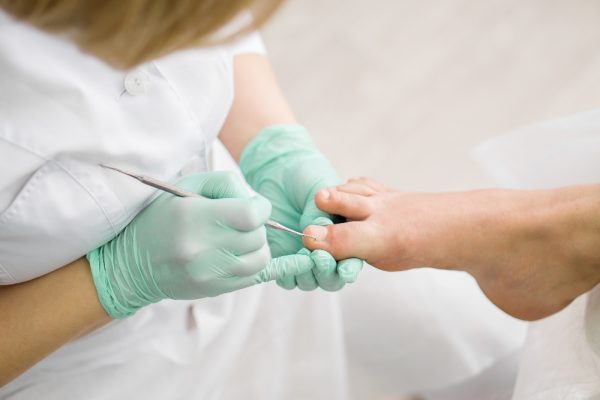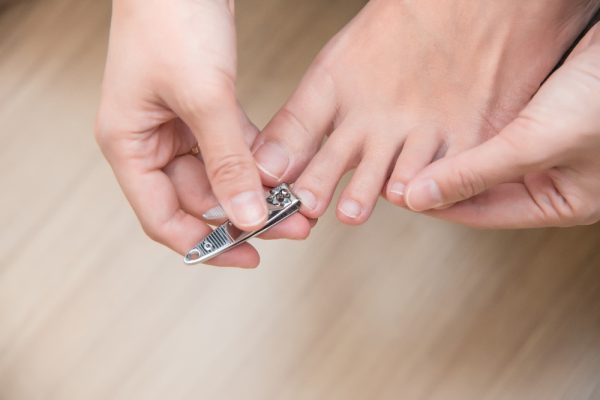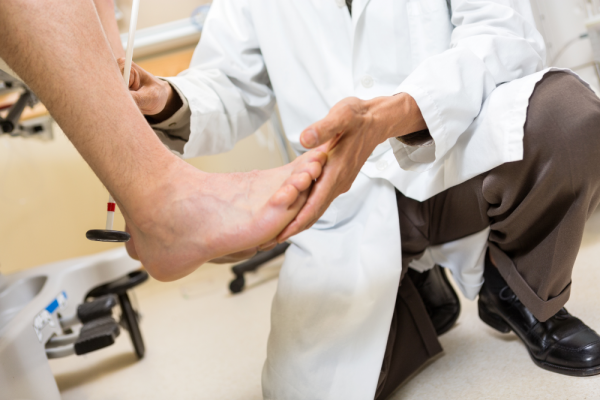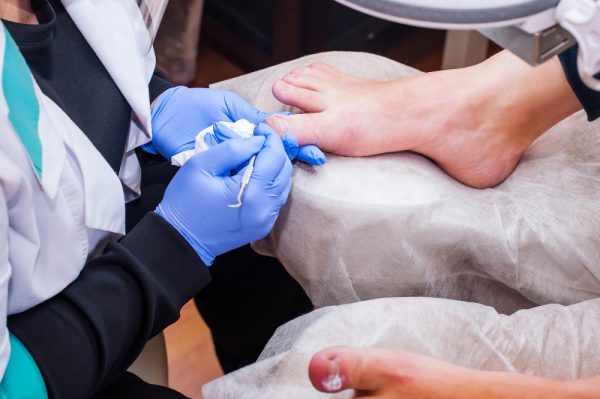An ingrown toenail can be a problematic, life-altering condition, resulting in pain and swelling in and around the nail bed. If you have ever experienced it firsthand, you likely want to ensure you don’t have to go through the process again.
Unfortunately, no preventative measures for ingrown toenails are 100% foolproof— but hopefully with our advice you can reduce your risk of having to make another trip into the podiatrist.

1. Wear Properly Fitted Shoes
Shoes that are too tight can force your toes to jam together. This creates the perfect environment for nails to begin growing improperly in the nail bed, resulting in an ingrown toenail.
It’s important to ensure your toes have room to move around within your shoes, and also make sure your socks aren’t too tight. Check out our article “5 Shoe Shopping Tips for Finding the Right Fit” to shoe shop like a pro.
2. Trim Your Nails Properly
You might not realize there is a right way and a wrong way to trim your toenails, but it does matter how you handle this routine hygienic task.
Make sure you don’t cut your toenails too short, below the white. When you do this, the skin at the sides of your nail can fold over and begin to alter the way the nail grows, leading to an ingrown toenail issue.
Also, it’s important to make sure to trim your toenails straight across, not at an angle. Trimming nails at a diagonal angle can change the way the toenail grows, increasing your risk of ingrown toenails. Diabetics in particular need to be mindful of properly cutting their nails.

3. Be Cautious of Pedicures
Be careful of pedicures for the very reasons listed above about improper cut jobs. While the experience of a pedicure can be pleasant, a nail technician who is overly aggressive in cutting your toenail can cause an ingrown toenail issue.
Luckily, there are ways you can help to reduce your chance of infection and foot issues at the salon. Here are “10 Ways to Avoid Pedicure Infections.”
4. Consider Your Personal & Family History
Unfortunately, if you have had ingrown toenails in the past or if one or both of your parents have the propensity for the condition, you are at an increased risk of experiencing the problem yourself.
There is nothing you can do about this risk, but knowing your heredity can at least ensure you are on the lookout for the condition.
5. Recognize Poor Circulation
Another common risk factor of ingrown toenails is poor circulation in the feet. If you are diabetic, have a history of tobacco use, have heart disease or similar medical conditions, you are automatically at an increased risk of poor circulation, which can increase your risk of ingrown toenails.
Therefore, if you have poor circulation or neuroma, visiting a podiatrist for regular foot examines can be wise.

6. Address the Issue in a Timely Manner
If you suspect you have an ingrown toenail, it’s important to address the issue quickly. This is vital to preventing an eventual infection.
Keep in mind, if your toenail is oozing, hot to the touch or has a foul odor, it is likely infected. If that’s the case, you need to seek our professional help. If you don’t have these symptoms, though, you can use common home remedies.
For example, soak the foot in warm water and Epsom salts. After soaking it to soften the skin, you can often remove the affected area of the nail yourself with sterilized nail-cutting tools. We offer some home remedies to reduce your chance of toenail infection here.
How Professionals Treat Ingrown Nails
If you need our help treating an ingrown toenail, you can expect the following when you visit our office:
- Assessment: We will look at your toe and confirm it is in fact an ingrown toenail and will also consider your history of the condition. If you have a history of recurrence or your nail is infected, we will likely recommend a common office procedure called a matrixectomy.
- Perform a Matrixectomy: We will numb the portion of your toe that is affected, then remove your ingrown toenail. We often will then apply the chemical phenol to the area, which will kill the cells that form nails, reducing the risk of ingrown toenail recurrence.

- Bandage Your Toe: After the procedure, we will bandage your toe and give you at-home care instructions for preventing infection.
- Follow-Up: Two weeks post procedure, we recommend a follow-up office visit to ensure the ingrown toenail has been completely removed and the area is healing properly.
We Are Here
Thankfully at the Foot & Ankle Group, we are often able to see you the same day if you are suffering from severe pain due to a foot related medical issue.
Our senior staff of foot and ankle surgeons boasts over 30 years of experience, giving you the very best in podiatry-related medical advice.
Contact us today at 239-936-5400 if you need podiatry attention due to an ingrown nail, poor circulation in the feet, fungal infection or any other foot problems.
Categorized in: Blog